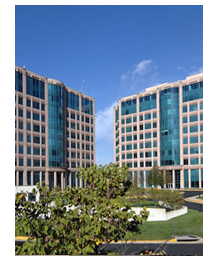In the event of a fire, the safe and rapid evacuation of the affected area is the joint responsibility of Building Management and the Occupants in that area. It is imperative that each employee become familiar with the information and procedures described on the following pages. If there are any questions, please call the Management Office at 703-226-2750 before an emergency arises!
IF YOU SMELL SMOKE:
- Call the Management Office at 703-226-2750. Report the smoke, giving the location if possible and any other available details.
- Notify your Fire Warden.
- Wait for a response from Building Management.
IF YOU DISCOVER A FIRE:
- Call the Fairfax County Fire Department at 911 or 703-691-2131.
- Telephone the Management Office at 703-226-2750. Give the exact location of the fire, and any other available details and/or pull the alarm box located next to the stairwell on each floor.
- Notify your Fire Warden.
- Evacuate the building.
DO NOT use the elevators.
- Using the back of your hand, feel any door before opening it to see if it is hot.
- Close, but don't lock doors, behind you to help contain the fire and smoke.
- If smoke is present, stay as close to the floor as possible.
IF ALL ESCAPE ROUTES ARE BLOCKED
- Move as far away from the fire as possible closing all doors as you go.
- Stuff clothing or other material around ventilation ducts and cracks in doors to prevent smoke from penetrating the area.
- If a phone is accessible, dial 911 and give them your precise location.
- If possible, hang a signal on a window to attract the attention of firefighters.
WHEN TO EVACUATE:
- Any time the fire alarm system is activated on your floor.
- When ordered to leave by the public address system.
- When ordered to leave by the General Manager or Assistant Manager, Police or Fire Department personnel.
- Follow the evacuation instructions precisely.
- DO NOT use the elevators unless otherwise instructed. Use stairwells only.
Building Fire Safety Features
- The Building is constructed of structural steel and concrete to inhibit the spread and minimize the effects of fire on the Building's structure.
- ABC fire extinguishers are located throughout the Building and at both stairwells on each floor. Occupants should become familiar with the exact location and the proper use of these devices.
- Each floor at Highline at Greensboro District has two stairwells (Stairwell “A” is located near the women’s restroom, and stairwell “B” is located near the men’s restroom.). Each stairwell is equipped with a public address speaker system. The enclosed exit stairwells are constructed of fire resistant materials. Stairwell doors must not be blocked open because this may allow the spread of fire or smoke into the exit stairwells. Occupants should become familiar with the location of all exit stairwells on their floor.
Types of Fires
CLASS A - Fires in such ordinary combustibles as paper, wood, cloth, rubber, textiles, and many plastics.
CLASS B - Fires in flammable liquids such as grease, oil, paint and gasoline.
CLASS C - Fires involving energized electrical equipment where there is a risk of shock. (When electrical equipment is de-energized, Class A fire extinguishers may be used safely).
CLASS D - Fires in combustible metals, such as magnesium, titanium, zirconium, etc.
Multi-purpose "ABC" extinguishers can be purchased to handle all classes of office fires. These chemical-based extinguishers can cause damage to electronic equipment. However, water extinguishers must not be used if an electrical current is present because of the danger of electrical shock. A fire in electronic equipment rooms will almost always require the use of an "ABC" rated fire extinguisher: "A" because there is likely to be paper nearby, "B" because there may be oil or grease involved, and "C" because it is electrical equipment.
Arrangements with Building Management should be made to protect areas such computer rooms, mailrooms, and duplicating and storage areas with fire rated enclosures and fire extinguishers. Depending on the size and value of these areas, smoke detectors or automatic extinguishing systems are recommended.
Fire Extinguisher Operation
TO OPERATE: If you use a fire extinguisher remember the word PASS.
PULL ... Pull the pin. Some extinguishers require releasing a latch or pressing a puncture lever.
AIM .... Aim low, pointing the extinguisher nozzle (or its horn or hose) at the base of the fire.
SQUEEZE... Squeeze the handle. This releases the extinguishing agent.
SWEEP ... Sweep from side to side at the base of the fire until it appears to be out. Watch the fire area in case fire breaks out again, and repeat the use of the extinguisher if necessary.
Most portable extinguishers work according to these directions, but some do not. Be prepared by making sure you read the directions on your fire extinguishers before a fire emergency happens.
Please click here to see Fire Prevention Tips






